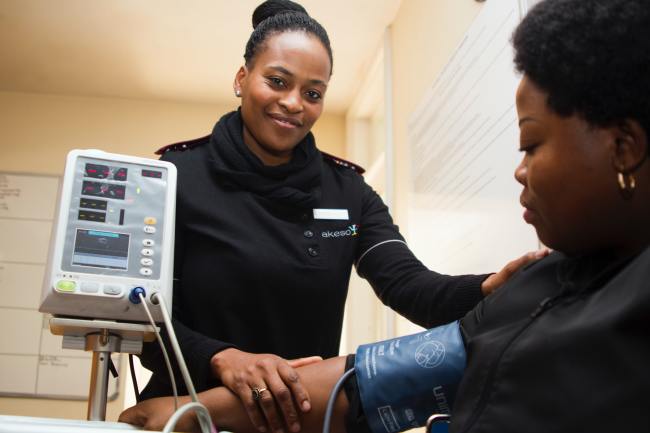
How are you doing? If you’re a doctor, there’s a good chance that you’re feeling somewhat-to-seriously burned out. Physician burnout is, according to a much-discussed paper published by a trio of our most significant healthcare organizations, a public health crisis. “[W]e recognize the need to further empower health care providers and support their emotional, physical, social, and intellectual health,” says Steven Defossez, paper co-author and VP for Clinical Integration Massachusetts Health and Hospital Association (MHA), in a media release. You may be aware that sitting at computer, endlessly filling in EHR fields has been linked to physician burnout—but you may not know that there’s a different kind of screen time out there, one that delivers the empowerment that Defossez seeks.
I’m talking about #medhumchat.
For the Twitter-phobic and literature-averse: #medhumchat is a hashtag, an abbreviation of “Medical Humanities Chat.” It’s a regularly recurring conversation, conducted on the famed social network, in which doctors, patients, and even humanists like me spend an hour (Wednesday nights at 9 p.m. ET) doing a close read of high-quality pieces of poetry and prose. So far, we’ve explicated Mary Oliver, Rafael Campo, Chana Bloch, and Maya Angelou (among others). The mission statement of #medhumchat—“fostering reflection, empathy and connection in healthcare through discussions of poetry and prose”—seems a direct answer to Defossez’s call for help, and as we’re currently in National Poetry Month, now is a superb time to talk about it.
The germ of the idea floated into the universe on December 16, 2018, when Colleen Farrell, #medhumchat’s founder and host and a resident in internal medicine at NYU, tweeted: “Hey #medtwitter, I'm toying with the idea of starting a narrative medicine twitter chat. each week we discuss a poem, essay, short story (something very brief!) relevant to medicine and our experience. Would folks be interested? Would you participate? Does this already exist?” Nearly a month later, the chatter began, and it’s been running on a more-or-less weekly ever since.
Embedded content: https://twitter.com/colleenmfarrell/status/1074409628153319424There’s something completely organic about this community that draws people in. Its unofficial nature makes it feel authentic and homey: a virtual book club for brainy, busy doctors. In fact, #medhumchat had an analog origin. “In my first year of residency, I led some sessions with my co-residents in which we discussed poetry and stories,” Farrell wrote in an email. The conversations disarmed the group, she says, and helped them “be more human and honest with each other.” Problem was, scheduling people who work impossible hours. “Hosting these discussions on twitter is logistically way easier. And it opens up some really amazing possibilities.”
The chat format is incredibly open. #medhumchat allows all kinds of healthcare folks to wade into a cultural conversation that would otherwise have not been available to them. “Patients and doctors are talking, attendings and medical students, surgeons and primary care doctors. I love how accessible Twitter is.” The welcoming, diverse nature of this group provides a kind of instant community to physicians who could really use it.
#medhumchat encourages participants to speak about literature through their experiences with care, treatment, healing, and suffering. The conversation can get emotional, but the platform offers enough distance that it’s never too emotional. It’s a safe way for many people to release the tensions built up during their rounds and, yes, at the keyboard inputting EHR data. “I think our discussions raise big questions that are at the heart of medicine yet so often get swept under the rug when our work is so busy and demanding,” says Farrell. “I also think a lot of medicine is frankly repetitious and algorithm driven. We have to memorize a lot for tests and follow a lot of rules.” She notes that many doctors “long to use their imaginations and engage with the world more creatively,” and that the chats allow some of this to happen.
Embedded content: https://twitter.com/NatashaDhawanMD/status/1093333894613602304Farrell is smart in that she usually picks short pieces that can be read quickly, in real time, as the hour swiftly diminishes. #medhumchat doesn’t require any prep work. As our overworked medical folk have precious time to spare, this efficiency matters. Additionally, the #medhumchat method means that people get right down to business. The hour is carefully designed and Farrell, in standard chat moderator fashion, posts a series of questions—which are prefaced with Q1, Q2, Q3, and so forth—that point to a specific piece of poetic language, say, or a story’s central theme.
The speed of #medhumchat means that the many responses it produces can be overwhelming, particularly for those unused to chats, and at times repetitive. But these aren’t significant issues. A willing participant will quickly get used to the rapid-fire formant, and if a bunch of readers are on the same page, as one says in the vernacular, it solidifies the sense of solidarity and maybe even diminishes a bit of loneliness.
The real value of #medhumchat: it makes visible the feelings of participants—to themselves and to the community. In a session on Mary Oliver’s “The Rabbit,” two questions are posed: “How do you feel reading the beginning of The Rabbit? How do you understand the relationship between the narrator and nature here?” “I feel like a heavy weight is being pushed upon the narrator,” tweets an MD named Natasha Dhawan in response. “No matter how many times I've read it, I feel this weight... I would associate this with the weight of newly being diagnosed with a chronic illness.” Shannon McNamara, another physician, replies: “Powerless in the face of nature, which can feel callous in the face of suffering,” and that “Leading a resuscitation in the ED after an hour of EMS coding in the field feels like that. I need to call it.”
Embedded content: https://twitter.com/ShannonOMac/status/1093334458416222208Note: the in-the-moment excitement of #medhumchat resides in the ability to share one’s response to a piece of literature and maybe get some positive feedback (a comment, like, or retweet) from the community. Maybe, if you say something wise or witty, you might land in #medhumchat’s curated recap page. Such a positive feedback loop is surely most welcome after a long, uncertain day in the exam room.
In the final analysis, #medhumchat fights burnout because it is a form of aesthetic therapy: time tailored to draw out some rich, relevant feelings from work-ravaged doctors. The #medhumchat community gives members a rare and valuable opportunity to externalize their unexpressed thoughts and feelings. In its own way, it is a modest act of poetry. As Yeats once wrote: “Out of the quarrel with others we make rhetoric; out of the quarrel with ourselves we make poetry.”




